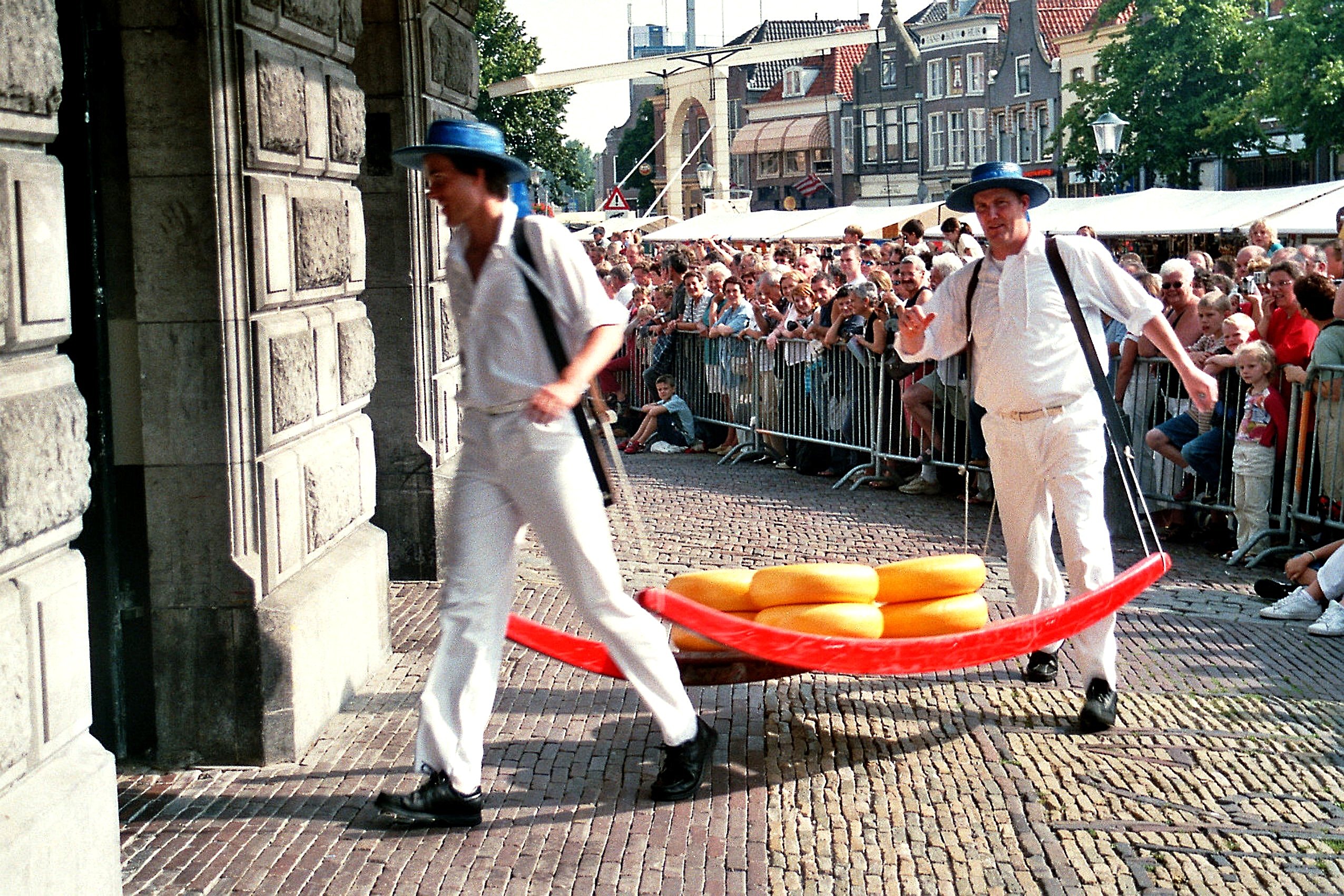Handbarrow on:
[Wikipedia]
[Google]
[Amazon]
The handbarrow, also spelled hand-barrow and hand barrow, is a type of human-powered transport. It was originally a flat, rectangular frame used to carry loads such as salt cod, cheese and  Scholars such as
Scholars such as
guano
Guano (Spanish from qu, wanu) is the accumulated excrement of seabirds or bats. As a manure, guano is a highly effective fertilizer due to the high content of nitrogen, phosphate, and potassium, all key nutrients essential for plant growth. G ...
. It has handles on both ends, so two people are needed to use it. In Dutch cheese markets
Dutch cheese farmers traditionally take their cheeses to the town's market square to sell them. Teams (''vemen'') of official guild cheese-porters (''kaasdragers''), identified by differently coloured straw hats associated with their ''forward ...
, official porters (''kaasdragers'') still use traditional barrows, albeit with straps, to transport cheese. A special handbarrow was built to move the Stone of Destiny around Westminster Abbey. Modern usage has expanded the definition to include the wheelbarrow or any wheeled cart or box propelled by hand.
 Scholars such as
Scholars such as Lynn Townsend White Jr.
Lynn Townsend White Jr. (April 29, 1907 – March 30, 1987) was an American historian. He was a professor of Middle Ages, medieval history at Princeton University, Princeton from 1933 to 1937, and at Stanford University, Stanford from 1937 to 194 ...
, Albert Leighton and Andrea Matthies suggest it may have inspired the invention of the wheelbarrow. The addition of a wheel meant it only required one person. ( Leonardo da Vinci is sometimes credited as the inventor, but a crude form of the wheelbarrow was in use in England in the early 14th century, predating da Vinci by a century.)
The Middle English word ''barwe'' means handbarrow, litter or stretcher, the last two being similar in construction to the handbarrow, only with the "cargo" being a person.
References
{{reflist